In the dynamic realm of cattle farming, the integration of cutting-edge technology is reshaping traditional practices. By embracing automation and digital solutions, farmers are optimizing efficiency and ensuring the well-being of their herds. This transformative shift involves deploying smart sensors, automated feeding systems, and data analytics.
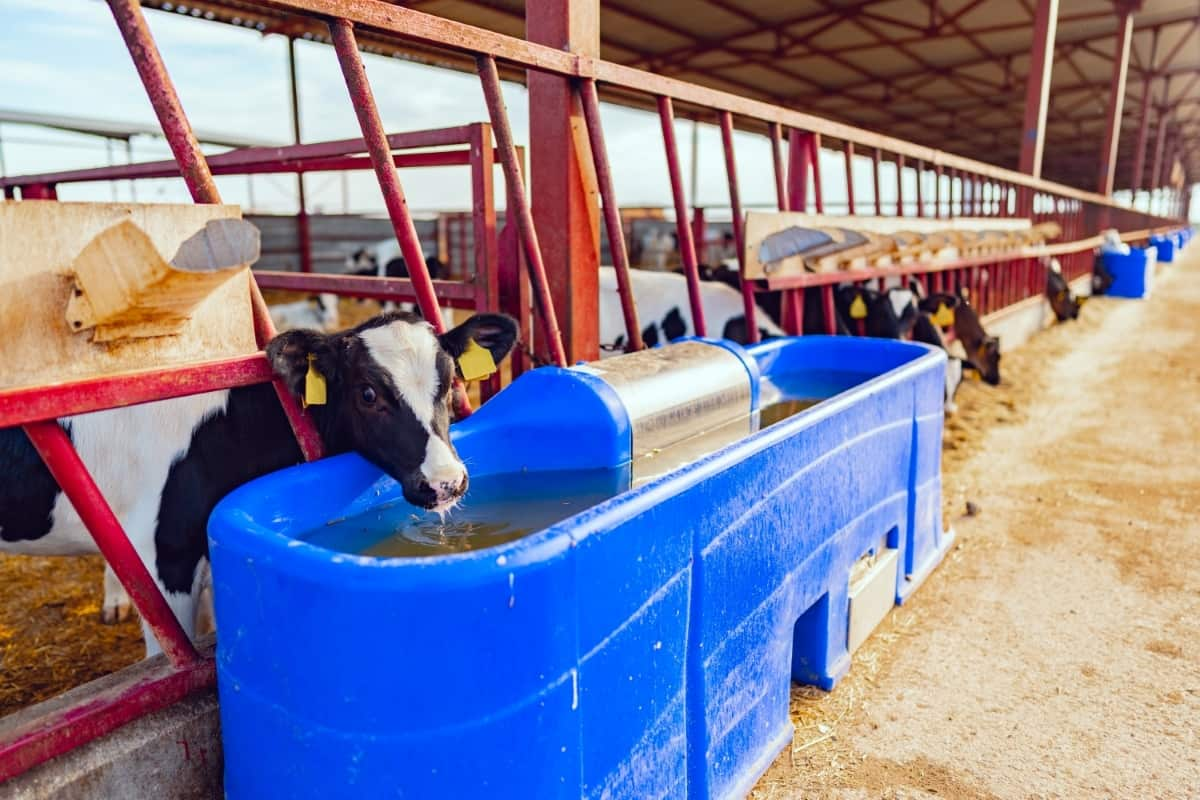
Such technological strides not only enhance productivity but also contribute to sustainable and humane livestock management. In this blog, we delve into the pivotal role of technology in modern cattle farming, exploring its manifold benefits and implications.
Technology in Cattle Farming
Introduction to Implementing Technology in Cattle Farming
Technology is transforming the livestock industry by improving the efficiency, productivity, and welfare of cattle farming. Cattle farmers can use various technologies to monitor, manage, and optimize their operations, such as remote sensors, drones, automated milking, precision livestock farming, and the Internet of Things (IoT). These technologies can help farmers reduce costs, increase yields, enhance animal health, and meet the growing demand for animal proteins.
Benefits of Implementing Technology in Cattle Farming
Technology in cattle farming offers numerous benefits for farmers and consumers. Remote monitoring allows farmers to control farm aspects remotely, improving animal welfare and preventing diseases. Automation automates labor-intensive tasks, improving efficiency and reducing human error.
Digital monitoring provides real-time data on animals’ health and performance, enabling informed decisions and improved productivity. Precision livestock farming allows farmers to tailor management practices to individual animal needs, reducing environmental impact and resource use.
The Internet of Things networking connects devices and systems on the farm through wireless networks and cloud computing, enabling farmers to collect, store, analyze, and share data from various sources. This enhances the integration and coordination of farm operations, providing farmers with access to external information and services. Overall, technology in cattle farming offers numerous advantages for both farmers and consumers.
Automation in Cattle Farming: Feeding Systems
Technology can automate cattle farming by implementing feeding systems. These systems are controlled and efficient devices that deliver feed to animals. Examples include automatic feeders, which dispense predetermined amounts of feed at regular intervals or on demand, and feed mixers, which mix different types of feed ingredients to form a balanced ratio. These machines are programmed to adjust the feed quantity and quality based on the animal’s age, weight, production level, and nutritional requirements.
In case you missed it: Why You Should Consider These 20 Best Dairy Cattle Breeds for Your Farm: Top Profitable Milk Cow Breeds
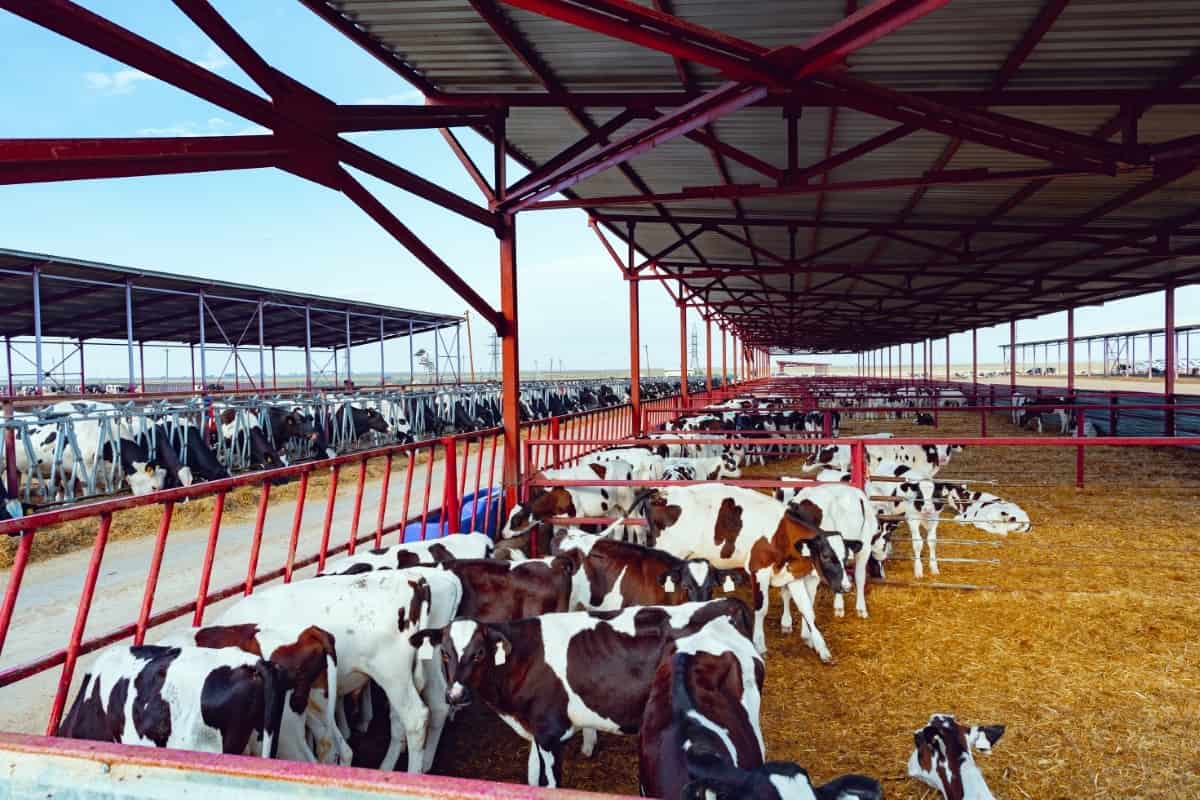
They can also record feed intake and consumption patterns. Feed conveyors, which transport feed from storage to feeders or feeders, can be belts, chains, augers, or pneumatic tubes. These devices can reduce labor costs and waste by delivering feed quickly and efficiently. Overall, technology can significantly automate cattle farming and improve animal welfare.
Digital Monitoring of Livestock Health
Digital monitoring of livestock health is a crucial aspect of improving cattle farming. This involves the use of electronic devices or systems that collect and analyze data on the health status and performance of animals. Examples of digital monitoring devices include wearable sensors, smart ear tags, and computer vision.
Wearable sensors measure physiological parameters such as body temperature, heart rate, respiratory rate, and location, while smart ear tags store information like breed, age, weight, genetics, health history, and production records. These devices can transmit data wirelessly to a receiver or cloud platform for processing and display.
Computer vision uses cameras and artificial intelligence to analyze images or videos of animals, recognizing and memorizing individual features, track movements and behaviors, and measuring body condition, weight, growth, and carcass quality. It can alert farmers of any changes or anomalies in the animals’ appearance or behavior.
Precision Livestock Farming Technologies
Precision livestock farming (PLF) is a technology-based approach that optimizes livestock management by monitoring and controlling individual variability. PLF technologies, such as sensors, cameras, drones, RFID tags, GPS trackers, smartphones, and computers, collect and integrate data from various sources to provide real-time feedback and recommendations for improving animal welfare and performance.
Examples of PLF technologies include automated milking systems (AMS), automatic weighing systems (AWS), and automatic sorting systems (ASS). AMS can milk cows automatically, adjusting settings based on udder shape, milk flow, and production level. AWS can also record weight, growth rate, feed efficiency, and carcass yield. ASS can sort animals based on weight, age, sex, breed, health condition, or production level, directing them to the appropriate destination. These technologies help farmers optimize herd management and marketing strategies, ultimately improving their overall livestock operations.
Implementing IoT (Internet of Things) in Cattle Farming
IoT (Internet of Things) technology connects devices and systems through wireless networks and cloud computing, enabling cattle farmers to collect, store, analyze, and share large amounts of data from various sources on their farms. It also provides farmers with access to external information and services from other stakeholders in the livestock value chain. Examples of IoT applications in cattle farming include smart farming platforms, smart contracts, and smart services.
Smart farming platforms integrate data from various devices and systems on the farm, providing farmers with dashboards, reports, and alerts on their animals’ health, performance, and productivity. Smart contracts, executed automatically using blockchain technology, facilitate transactions between farmers and other parties in the livestock value chain, ensuring transparency, security, and trust by verifying and recording the identity, quality, and traceability of livestock products.
Smart services, on the other hand, provide farmers with information and assistance from external sources, such as weather forecasts, market prices, disease outbreaks, veterinary advice, extension support, and education. These services help farmers make informed decisions and access new opportunities.
In case you missed it: Why You Should Consider These 20 Best Beef Cattle Breeds for Your Farm
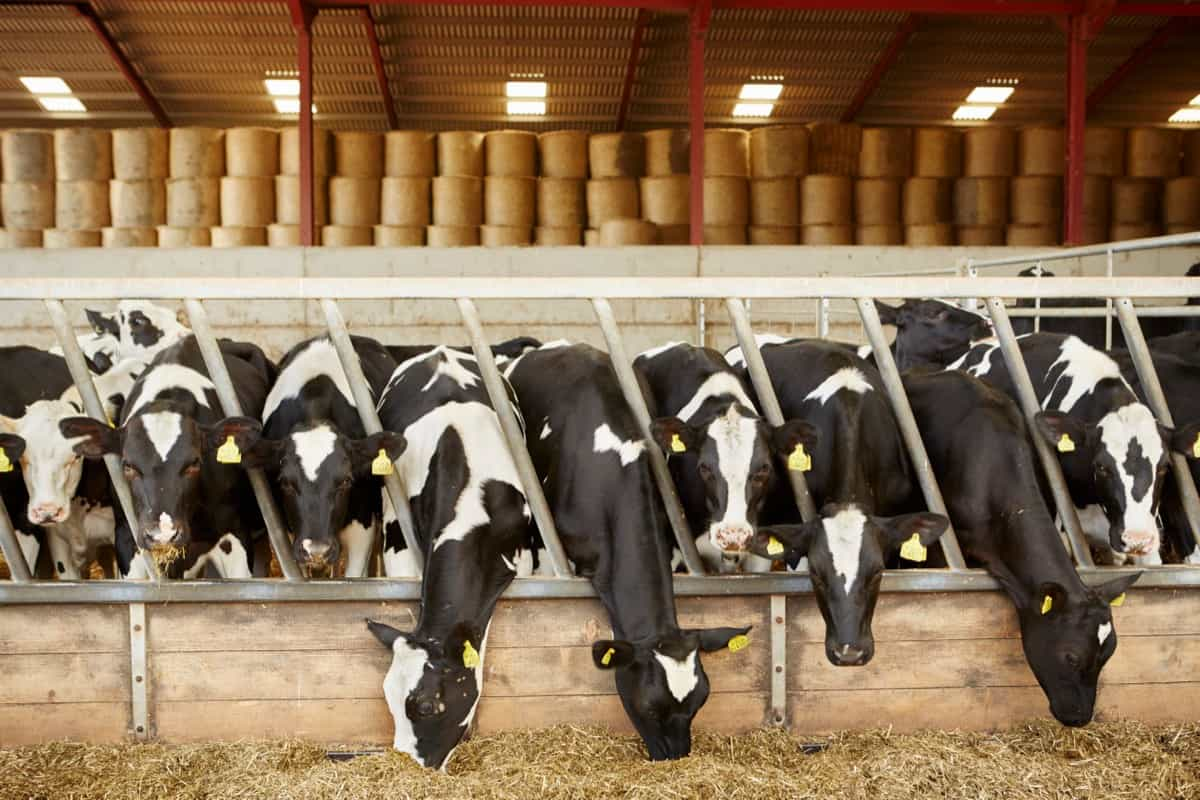
Robotics and Automated Handling Systems
Robotics and automated handling systems are technologies that can improve the efficiency, productivity, and welfare of livestock farming. Robotics can perform tasks such as milking, feeding, cleaning, monitoring, and harvesting, while automated handling systems can facilitate the transport, sorting, weighing, and identification of animals. These technologies can reduce labor costs, increase animal comfort, optimize resource use, and enhance data collection and analysis.
- Robotic milking systems (RMS) allow cows to be milked on demand without human intervention. RMS can also measure milk quality, quantity, and composition, as well as cow health indicators such as body weight, activity, and rumination.
- Robotic feeding systems can mix and distribute feed according to the nutritional needs and preferences of each animal or group of animals. Robotic feeding systems can also monitor feed intake, wastage, and quality.
- Robotic cleaning systems that can remove manure, bedding, and waste from animal housing areas, improving hygiene and reducing ammonia emissions. Robotic cleaning systems can also disinfect surfaces and equipment to prevent disease transmission.
- Robotic harvesting systems can collect eggs, meat, or wool from poultry, pigs, or sheep, respectively. Robotic harvesting systems can also grade, pack, and label the products according to quality standards.
- Automated handling systems that can move animals from one location to another using conveyor belts, gates, or ramps. Automated handling systems can also sort animals by weight, age, sex, or health status and identify them using radio frequency identification (RFID) tags or biometric sensors.
In case you missed it: Lumpy Skin Disease in Cattle: Causes, Symptoms, Treatment, and Control
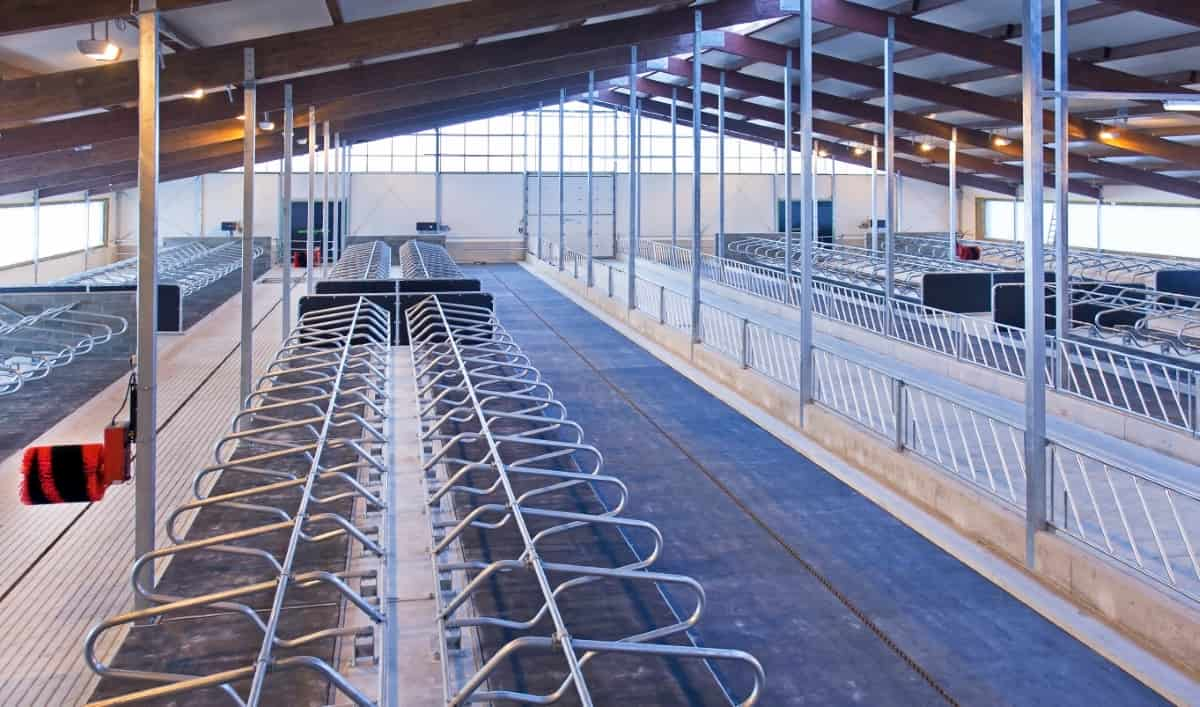
Data Management and Analytics for Cattle Farming
Data management and analytics are processes that involve collecting, storing, processing, and interpreting data from various sources to support decision-making in cattle farming. Data management and analytics can help farmers optimize production performance, animal health and welfare, environmental impact, and profitability.
- Data collection systems can gather information from sensors, cameras, microphones, or wearable devices attached to animals or equipment. Data collection systems can also integrate data from external sources such as weather forecasts, market prices, or disease outbreaks.
- Data storage systems that can organize and store data in databases, cloud platforms, or distributed networks. Data storage systems can also ensure data security, privacy, and quality.
- Data processing systems can transform raw data into meaningful information using artificial intelligence (AI) methods like natural language processing, deep learning, machine learning. Data processing systems can also perform tasks such as data cleaning, filtering, aggregation, or visualization.
- Data interpretation systems that can provide insights, recommendations, or predictions based on the information derived from data processing. Data interpretation systems can also support farmers in planning, monitoring, and evaluating their actions.
Environmental Monitoring and Sustainability Practices
Environmental monitoring and sustainability practices are approaches that aim to measure, reduce, and mitigate the environmental impact of livestock farming. Environmental monitoring and sustainability practices can help farmers comply with regulations, improve resource efficiency, enhance animal welfare, and increase social acceptance.
- Environmental monitoring systems can assess the environmental impact of livestock farming using indicators such as greenhouse gas emissions, water use, nutrient cycling, or biodiversity. Environmental monitoring systems can also detect anomalies or risks such as air pollution, water contamination, or soil erosion.
- Environmental reduction systems can decrease the environmental impact of livestock farming using strategies such as precision feeding, genetic improvement, or waste management. Environmental reduction systems can also optimize the use of inputs such as feed, water, or energy.
- Environmental mitigation systems can offset the environmental impact of livestock farming using practices such as carbon sequestration, renewable energy production, or ecosystem services provision. Environmental mitigation systems can also create value from outputs such as manure, biogas, or compost.
Remote Access Control and Security Systems
Remote Access Control and Security Systems in Cattle Farming Remote access control and security systems are technologies that allow farmers to monitor and manage their livestock from a distance using devices such as cameras, sensors, alarms, and locks. These systems can help farmers improve the safety, health, and productivity of their animals, as well as reduce labor costs and environmental impacts. Some examples of remote access control and security systems in cattle farming are:
IoT in Agriculture
- This is the application of Internet of Things (IoT) devices and solutions in farming, which can collect and analyze data from various sources, such as soil, weather, crops, animals, and machines.
- IoT in agriculture can help farmers optimize their operations, increase efficiency, and reduce waste.
In case you missed it: Top and Highest Milk Producing Cattle/Cow Breeds in India: Best Guide for Beginners
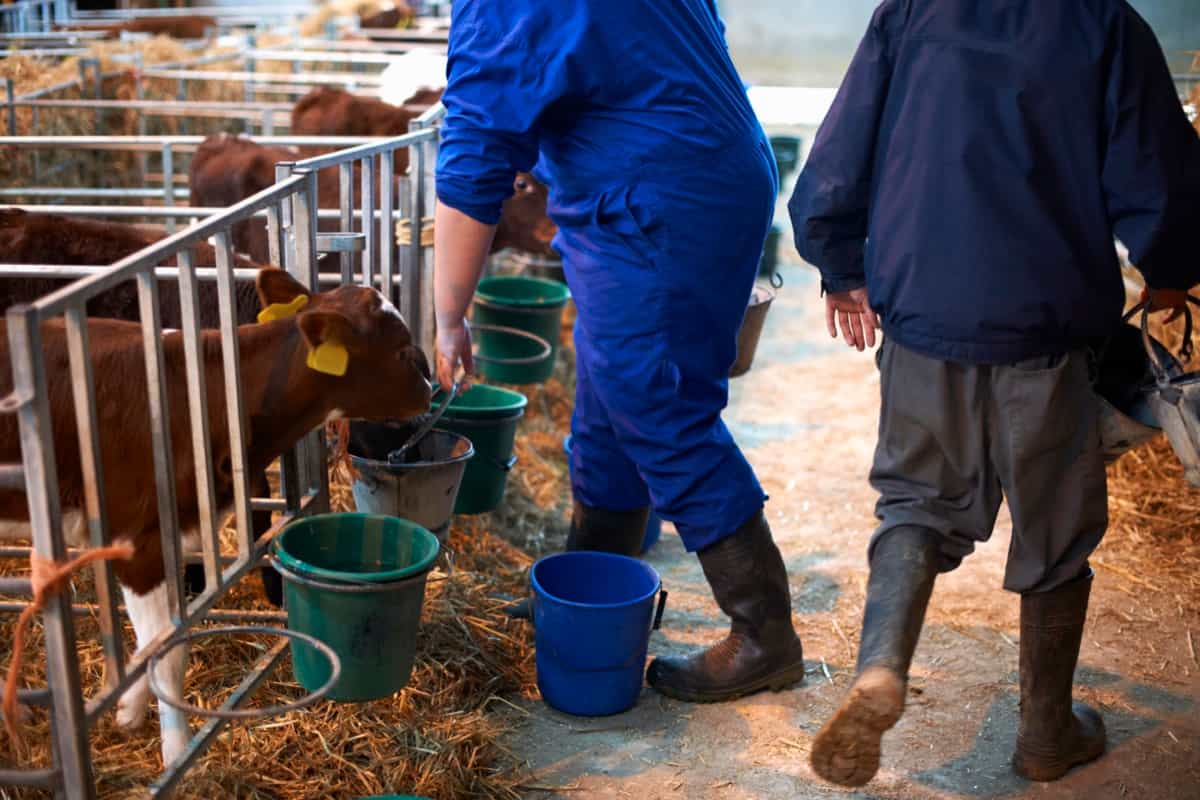
Smart Farming
- This is a subset of IoT in agriculture that focuses on the use of IoT solutions for livestock management.
- Smart farming can help farmers track the location, movement, behavior, health, and well-being of their animals using sensors and cameras.
- Smart farming can also enable remote feeding, milking, and fencing of animals using automation and robotics.
Artificial Intelligence (AI) for Livestock
- This is the use of AI practices, like machine learning and computer vision, to process and interpret the data collected by IoT devices in livestock farming.
- AI for livestock can help farmers identify and predict problems, such as diseases, injuries, stress, heat detection, and calving.
- AI for livestock can also help farmers improve the quality and quantity of milk production, as well as the genetic potential of their animals.
Integration of AI (Artificial Intelligence) in Cattle Farming
AI is a branch computer science that creates machines and system can perform tasks that normally require human intelligence, such as learning, reasoning, decision-making, and perception. AI has many applications in various fields, including agriculture and livestock farming. Some examples of the integration of AI in cattle farming are
Automated Milking
- This is the use of AI-enabled smart sensors and robots to perform milking tasks without human intervention.
- Automated milking can analyze the milk quality and flag any abnormalities in the product.
- Automated milking can also reduce labor costs, improve animal welfare, and increase milk yield.
Precision Livestock Farming
- This is the use of AI-powered image analysis and biometrics to monitor the health and welfare of individual animals.
- Precision livestock farming can also provide early detection and prevention of diseases, injuries, stress, heat detection, calving, etc.
Synchronization
- This is the use of hormones to synchronize the heat cycles of female animals for artificial insemination (AI).
- Synchronization can help farmers improve the genetic potential of their animals by using semen from superior sires.
- Synchronization can also reduce the need for heat detection and increase the conception rate.
In case you missed it: How to Make Corn Silage: Production and Management Steps for Goats, Sheep, Cows, Pigs, and Cattle
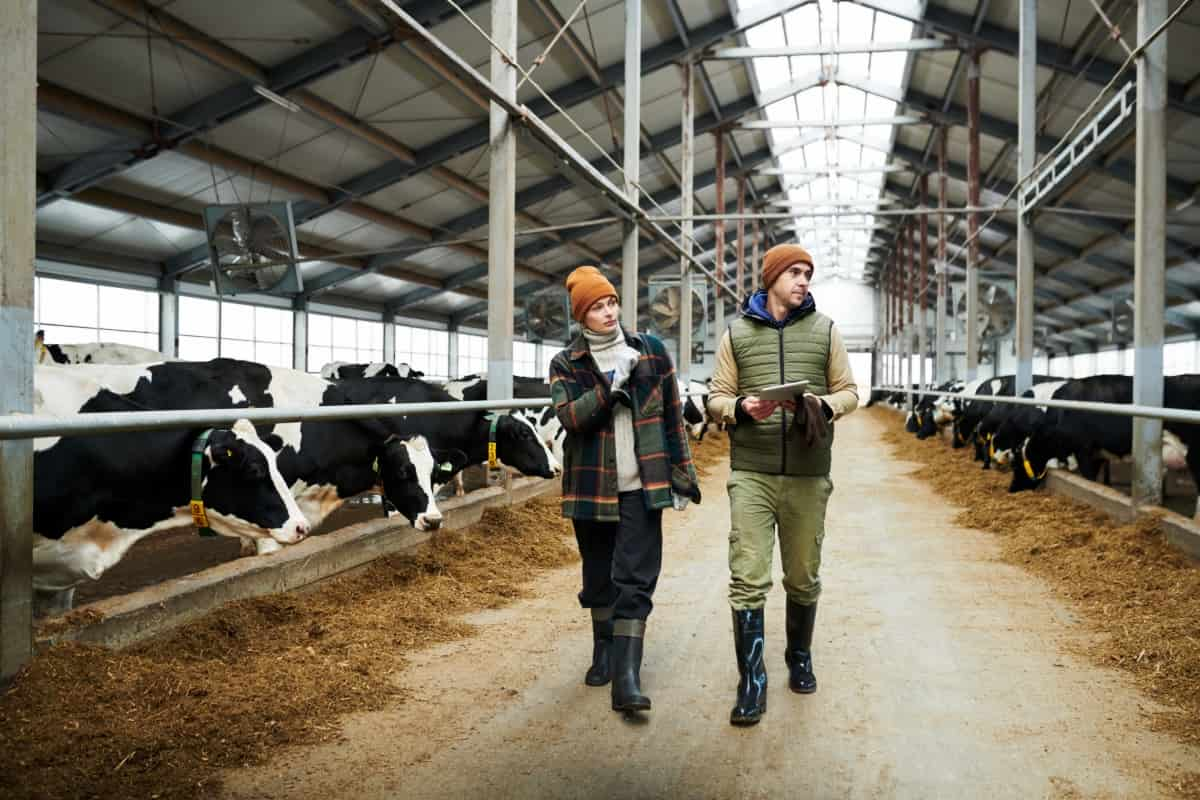
Conclusion
Technology enhances productivity, profitability, and sustainability in cattle farming by automating and managing resources efficiently. Benefits include reduced labor costs, improved animal welfare, increased feed efficiency, early disease detection, improved traceability, and reduced environmental impacts.
- Types of Pesticides Used in Agriculture: A Beginner’s Guide
- Economical Aquaculture: A Guide to Low-Budget Fish Farming
- 15 Common Planting Errors That Can Doom Your Fruit Trees
- How to Make Houseplants Bushy: Effective Tips and Ideas
- Innovative Strategies for Boosting Coconut Pollination and Yield
- Pollination Strategies for Maximum Pumpkin Yield
- The Complete Guide to Chicken Fattening: Strategies for Maximum Growth
- Natural Solutions for Tulip Problems: 100% Effective Remedies for Leaf and Bulb-Related Issues
- Revolutionizing Citrus Preservation: Towards a Healthier, Greener Future
- Natural Solutions for Peony Leaf and Flower Problems: 100% Effective Remedies
- Maximizing Profits with Avocado Contract Farming in India: A Comprehensive Guide
- Natural Solutions for Hydrangea Problems: 100% Effective Remedies for Leaf and Flowers
- The Ultimate Guide to Choosing the Perfect Foliage Friend: Bringing Life Indoors
- From Sunlight to Sustainability: 15 Ways to Use Solar Technology in Agriculture
- The Ultimate Guide to Dong Tao Chicken: Exploring from History to Raising
- The Eco-Friendly Makeover: How to Convert Your Unused Swimming Pool into a Fish Pond
- Mastering the Art of Delaware Chicken Farming: Essentials for Healthy Backyard Flocks
- 20 Best Homemade Fertilizers for Money Plant: DIY Recipes and Application Methods
- How to Craft a Comprehensive Free-Range Chicken Farming Business Plan
- Brighten Your Flock: Raising Easter Egger Chickens for Beauty and Bounty
- How to Optimize Your Poultry Egg Farm Business Plan with These Strategies
- Subsidy for Spirulina Cultivation: How Indian Government Schemes Encouraging Spirulina Farmers
- Ultimate Guide to Raising Dominique Chickens: Breeding, Feeding, Egg-Production, and Care
- Mastering the Art of Raising Jersey Giant Chickens: Care, Feeding, and More
- Ultimate Guide to Raising Legbar Chickens: Breeding, Farming Practices, Diet, Egg-Production
- How to Raise Welsummer Chickens: A Comprehensive Guide for Beginners
- How to Protect Indoor Plants in Winter: A Comprehensive Guide
- Ultimate Guide to Grow Bag Gardening: Tips, Tricks, and Planting Ideas for Urban Gardeners
- Guide to Lotus Cultivation: How to Propagate, Plant, Grow, Care, Cost, and Profit
- Agriculture Drone Subsidy Scheme: Government Kisan Subsidy, License, and How to Apply Online
- Ultimate Guide to Raising Araucana Chickens: Breed Profile, Farming Economics, Diet, and Care
- Bringing Hydroponics to Classroom: Importance, Benefits of Learning for School Students
- Ultimate Guide to Raising Polish Chickens: Breed Profile, Farming Economics, Diet, and Care
- Ultimate Guide to Raising Australorp Chickens: Profile, Farming Economics, Egg Production, Diet, and Care
- Silkie Chicken Farming: Raising Practices, Varieties, Egg Production, Diet, and Care
- Sussex Chicken Farming: Raising Practices, Varieties, Egg Production, Diet and Care